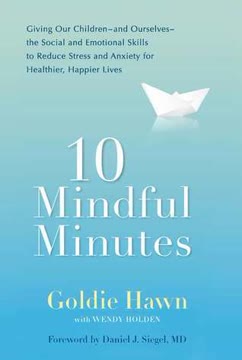Key Takeaways
1. The Urgent Call: Children's Emotional Crisis Demands Action Now
According to UNICEF, the children of the United States are the second least happy children in the world, after the United Kingdom, a fact that should shake every one of us to the core.
Alarming statistics. Our children are facing an unprecedented emotional crisis, with widespread unhappiness and mental health challenges. This isn't just an inner-city issue; affluent children are also struggling, often feeling misunderstood and empty despite material abundance.
Signs of distress. Many children suffer unseen, exhibiting symptoms like:
- Emotional problems (8% of children, 20% of teens with ADHD/ADD)
- Depression (infants as young as three, 1 in 8 teenagers)
- Increased pharmaceutical use (68% rise in girls, 30% in boys)
- Poor academic performance and high dropout rates
- Quadrupled adolescent suicide rates since the 1950s
Emotional literacy is vital. These statistics highlight a desperate need for intervention, emphasizing that emotional literacy is as crucial as academic literacy. Parents must look beyond surface behaviors to understand and address their children's quiet distress, fostering resilience and happiness.
2. Unlock Your Brain's Potential: Understanding the "Guard Dog" and "Wise Old Owl"
Most important, we can teach them that they can be in control of their brains rather than the other way around.
Brain basics. The human brain, a complex and constantly evolving organ, can be understood through simple analogies to empower children and adults. It's divided into two hemispheres—left for logic and language, right for emotions and holistic thinking—and three main layers.
Key brain players. Two crucial parts are the amygdala, acting as a "Guard Dog" that triggers fight, flight, or freeze responses to perceived threats, and the prefrontal cortex (PFC), the "Wise Old Owl" responsible for critical thinking, planning, and impulse control. When the Guard Dog barks, it can "hijack" the Wise Old Owl, impairing rational thought.
Neuroplasticity offers hope. The brain is not fixed; it's "plastic," meaning we can grow new neural pathways and change our behavior at any age. Through intentional focus and positive practices, we can strengthen the connection between the Wise Old Owl and the Guard Dog, allowing us to regulate emotions and make better choices.
3. Mindful Breathing: The "Secret Sauce" for Calm and Focus
By sitting and mindfully breathing for ten minutes a day, in as little as eight weeks you strengthen the part of the prefrontal cortex involved in generating positive feelings and diminish the part that generates negative ones.
Metacognition in action. Mindful breathing is a simple, free, and powerful tool that allows us to observe our own minds and actions, a unique human ability called metacognition. It's about paying attention to the present moment, letting thoughts and feelings pass without judgment.
Profound benefits. This practice brings oxygen to the brain and body, creating calm and strengthening concentration. Studies show that regular mindful breathing:
- Calms the stress response
- Strengthens attention and self-awareness
- Promotes brain integration
- Fosters better sleep
Consistency over duration. Even three minutes of mindful breathing a day, practiced frequently, can create lasting positive changes in the brain due to neuroplasticity. It's the "secret sauce" that enhances all other mindful practices, helping us become more reflective than reactive.
4. Mindful Sensing: Reconnecting with the World Through Your Senses
It is the senses that are the only way to feel the world.
Interrupting the static. In our overstimulated world, mindful sensing helps us regain focus by consciously engaging our five senses. This practice strengthens neural networks for concentration, emotional balance, and executive function, allowing us to discern important information from the constant barrage of sensory data.
Engaging all senses.
- Listening: Mindful listening improves empathy and memory, helping us truly hear others and appreciate silence.
- Seeing: Mindful seeing calms the brain, allowing us to notice details, appreciate beauty, and shift perspective from criticism to appreciation.
- Smelling: The strongest memory trigger, mindful smelling connects directly to emotions, aiding recall and influencing mood.
- Tasting: Mindful tasting helps us savor food, eat less, and take responsibility for our eating habits.
- Movement: Mindful movement releases dopamine, improves memory, eases depression, and enhances neurogenesis.
Holistic development. By consciously engaging our senses, we not only improve focus and cognitive abilities but also foster emotional well-being and a deeper connection to the world around us. This practice helps children slow down, appreciate subtleties, and build crucial attention to detail.
5. Cultivating Optimism: Your Brain's Resiliency Vaccine
Optimism is the faith that leads to achievement. Nothing can be done without hope and confidence.
Power of perspective. Optimism is the tendency to interpret events in the best possible light, a mindset that can be learned and cultivated. It acts as a "resiliency vaccine," helping us bounce back from difficulties and see challenges as opportunities for growth.
Broaden and build. Positive emotions, like optimism, actively undo the effects of negative ones, resetting our emotional and physical balance. They broaden our minds, allowing us to see a wider range of solutions and build a more productive future.
Profound benefits. Optimism triggers "dopamine bubbles," boosting attention, motivation, and perseverance. It also strengthens the immune system, increases pain tolerance, and is linked to:
- Longer, more satisfying relationships
- Higher energy and income
- Better physical health and longer life expectancy
- Reduced risk of depression and heart disease
By consciously choosing positive thoughts, we can transform our brains and lives, creating a happier and healthier future for ourselves and our children.
6. Savoring Happiness: Double Your Joy and Beat the "Hedonistic Treadmill"
We need to remind ourselves that many pleasurable moments exist each day in our life.
Beyond fleeting pleasure. Savoring happiness means consciously prolonging and appreciating positive experiences, counteracting the "hedonistic treadmill" where new possessions only provide temporary joy. This practice encourages our brains to value what we have, giving experiences lasting meaning.
Dopamine's double dose. Savoring increases dopamine output not only during the initial pleasurable experience but also when we recall it, providing a "double dose" of feel-good chemicals. This builds resilience and perseverance, acting as insurance against depression.
Five ways to savor:
- Sharpening perception: Fully engaging senses (e.g., tasting food, smelling a flower).
- Absorption: Immersing oneself in the moment without distraction.
- Self-congratulation: Taking pride in achievements.
- Sharing with others: Retelling happy events to relive them.
- Memory building: Using photos or souvenirs to trigger joyful memories.
By intentionally savoring, we expand our heart's capacity for joy, making us more content and less susceptible to the "never enough" syndrome.
7. Gratitude: "Vitamin G" for a Healthier, Happier Life
Thankfulness is also one of the keys to being able to bounce back from difficulties and experience less stress in the face of ongoing problems.
A powerful force. Expressing gratitude is one of the most effective ways to increase happiness, with 90% of people reporting more joy and 84% noting reduced stress and depression. It's a free, simple practice that profoundly impacts our well-being.
Holistic benefits. Gratitude, or "vitamin G," strengthens our immune system, reduces physical pain, and can add an average of seven years to our lives. Emotionally, it makes us kinder, more generous, less lonely, and better able to cope with stress, reducing incidences of depression, bulimia, phobias, and substance dependency.
Transforming relationships. Gratitude prevents us from taking others for granted, fostering stronger, more lasting relationships. Praising children specifically for their positive actions, rather than general remarks, reinforces desired behaviors by triggering dopamine release, encouraging them to repeat good deeds.
8. Managing Anger: The "Traffic Signal Game" to Prevent Emotional Hijacks
For every minute you remain angry you give up sixty seconds of peace of mind.
Understanding anger. Anger is a normal, albeit destructive, emotion that can blur our vision and lead to regrettable actions. It's crucial to recognize that children's anger often masks deeper feelings like loss or abandonment, requiring empathy rather than overreaction to symptoms.
The "Grand Canyon of Anger." Unchecked anger creates deep neural pathways, making angry outbursts habitual and toxic. When the amygdala (Guard Dog) fires, it releases stress hormones in two surges; catching anger during the first surge is vital to prevent the more destructive second surge.
The Traffic Signal Game. This simple tool helps children (and adults) manage anger:
- Red: Stop and do mindful breathing.
- Yellow: Think about different, mindful ways to respond.
- Green: Try the most mindful response.
This game teaches responsibility for choices, calms the brain, and reduces the intensity of difficult feelings, fostering emotional resilience.
9. Navigating Sadness: Embrace Feelings to Foster Growth
Even a happy life cannot be without a measure of darkness.
Normal and healthy. Sadness is a natural and healthy human emotion, though children often feel embarrassed by it. It's vital for parents to acknowledge and support their children's feelings, no matter how small, rather than dismissing them.
Sharing is key. Openly sharing feelings of sadness, both our own and our children's, fosters healthier relationships and combats isolation. Attuning to a child's sadness, even if it stems from a seemingly minor event like a lost toy, helps them feel seen and heard, regulating their emotions in a healthy way.
Beyond sadness to depression. While sadness is temporary, prolonged sadness can lead to depression, characterized by hopelessness, decreased interest, social isolation, and physical complaints. If these symptoms persist, seeking professional help is crucial, as early intervention can prevent long-term issues.
10. Conquering Fear: Calming the Amygdala for Inner Peace
Fear tends to overrule reason, as the amygdala hobbles our logic and reasoning circuits.
Fear's powerful grip. Fear, strongly activated by the amygdala (Guard Dog), constantly scans for threats, often overriding rational thought. Some children are "high-reactive" and naturally more fearful, but learning coping skills, especially early on, can significantly reduce anxiety disorders in adulthood.
Managing the response. When children are afraid, mindful breathing helps calm the amygdala, allowing the prefrontal cortex (Wise Old Owl) to think clearly. Distraction techniques, like "changing the channel" from a scary thought to a fun activity, can also effectively defuse fear.
Parental fears. Parents also experience intense fear for their children, especially in an uncertain world. Mindfulness helps manage these anxieties, preventing overreactions and allowing parents to provide a stable, secure base. Establishing secure attachment early on is crucial, as it provides a firm ground for children during unsettling life changes.
11. Empathy: The Foundation of Connection and a Caring Society
A human being . . . experiences himself, his thoughts, and feelings as something separated from the rest—a kind of optical delusion of his consciousness. This delusion is a kind of prison for us. . . . Our task must be to free ourselves from this prison by widening our circles of compassion to embrace all living creatures and the whole of nature in its beauty.
Beyond self-interest. Empathy, the ability to understand and share the feelings of another, is fundamental to human social interaction and morality. It fosters compassion, forgiveness, and trust, building a healthy society and preventing desensitization to violence.
Developing perspective. Parents can cultivate empathy by modeling empathetic behavior, encouraging charitable giving, and using techniques like "going to the balcony" to view conflicts objectively. This helps children understand different viewpoints and make informed decisions rather than acting on impulse.
Combating bullying. Empathy plays a vital role in preventing bullying, a pervasive issue in schools. Children with strong empathetic skills are more likely to intervene and defend vulnerable peers, fostering a sense of community and literally changing lives.
12. Kindness: The "Helper's High" That Rewires Your Brain for Good
Be kind, for everyone you meet is fighting a hard battle.
Compassion in action. Kindness is thoughtfulness translated into action, stemming from empathy and leading to profound benefits for both the giver and receiver. Scientific research shows that acts of kindness literally rewire our brains.
The "helper's high." Mirror neurons mean that even witnessing kindness triggers physiological changes in the brain, boosting our immune system and increasing T cells. Performing kind acts releases dopamine, activating pleasure centers and leading to a "helper's high" with benefits like:
- Reduced depression and hostility
- Increased optimism and resilience
- Higher energy and self-esteem
Simple, lasting impact. Kindness doesn't require time or money; it can be as simple as a smile or holding a door. Doing just five small acts of kindness a week can significantly boost mood, and these effects are cumulative, fostering a culture of compassion and self-forgiveness.
Last updated:
Review Summary
10 Mindful Minutes receives largely positive reviews, with readers praising its accessible approach to mindfulness and practical techniques for both adults and children. Many appreciate Hawn's personal anecdotes and the book's focus on emotional intelligence. Some find the content familiar, while others are pleasantly surprised by Hawn's knowledge. Critics note its simplifications and Hollywood influence. Overall, readers value the book's emphasis on reducing stress, improving focus, and fostering happier, healthier lives through mindfulness practices.
Similar Books

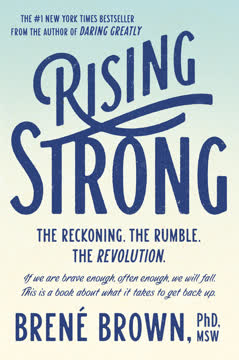
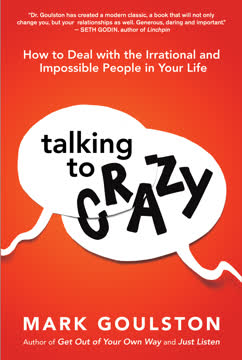
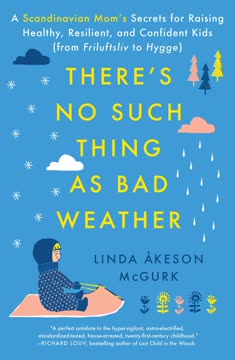




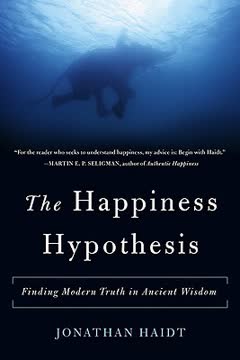
Download PDF
Download EPUB
.epub digital book format is ideal for reading ebooks on phones, tablets, and e-readers.
